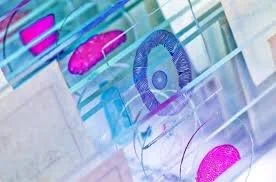Introduction To Biospecimen Management
Biospecimens have been collected for various uses such as clinical trials, molecular epidemiology, and other research. It is important for specimen management to occur in a controlled environment. An environment where there are strict policies and guidelines in place that help ensure the quality and integrity of the specimen and data. With proper procedures, biorepositories are able to produce high quality biospecimens that are needed for research. Biospecimens are collected from donors for patient monitoring, care, and research studies. They have helped many medical advances such as those for cancer, heart disease, and AIDs. Due to the increased sensitivity and specificity of analytic techniques over the years, it is crucial that biospecimens are of the highest quality.
Biospecimen Collection
There are various types of specimens that are required based on different research goals. Some examples include:
Whole blood and blood fractions (red blood cells, serum, plasma, buffy coat)
Tissue obtained from transplants, surgery, or autopsy
Urine
Buccal cells and saliva
Bone marrow
Placental tissue, cord blood, or meconium
Feces
Hair
Semen
Nail clippings
Etcetera
Specimens should be collected, processed, and stored according to guidelines that take into account future analyses. The collection procedures will differ for different biospecimens and intended analyses. However, all procedures should be accurately documented.
a) Blood Collection
Blood sample collection should be performed by a trained phlebotomist to reduce donor discomfort and to avoid compromising the quality of the sample. These standard protocols should be followed.
Glass or plastic tubes with appropriate additives should be used
Blood should be drawn in an orderly manner to avoid cross-contamination of additives.
Serum should be separated from other components as soon as possible to reduce contamination. This is important as serum can be used for the improved analyses of nutrients, lipids, antibodies, and lipoproteins.
Follow guidelines and recommendations for time elapsed between blood collection or removal from the storage unit and temperature for processing of blood specimens depending on the intended analyses.
Avoid thaw and refreeze cycles.
Since RNA and proteins are vulnerable to enzymatic degradation, follow necessary protocols that help ensure their integrity during the collection and processing phase.
b) Tissue Collection and Fixation
Most tissues are obtained through surgery, biopsy, or autopsy. Generally, it would be best if the procurement of the specimen is performed by a trained pathologist. The time between the collection and stabilization process should be minimal. This means that the best approach is to collect, stabilize, and process the specimens rapidly. Detailed records regarding the timing for excision, fixation, or freezing should be kept. For autopsy specimens, it is vital to know the interval between death, collection, and processing of the specimen as tissues degrade rapidly after death. Tissues can be fixed using formalin, alcohol, and paraffin embedding as it has a relatively low cost when freezing or when storage facilities are unavailable.
c) Urine Collection
Urine collection can be performed in some study designs and to achieve certain analytical goals. Examples of this include:
Urine collected upon waking up in the morning
Random specimens used for drug monitoring or cytology studies
Timed urine collections
Etcetera
Urine specimens should be kept refrigerated or kept on ice with or without a preservative.
d) Saliva or buccal cell collection
Saliva along with buccal cells are a great source of DNA for genetic studies. Samples are easily collected by asking donors for self-collection. Methods include using cytobrushes, swabs, and a mouthwash protocol.
Preservation of Biospecimen Stability
As previously mentioned, it is important to minimize the interval between collection and stabilization. The temperature of biospecimens should be reduced when freezing is the endpoint. Control of processing time is necessary if fixation is the stabilization endpoint. Biobanks should utilize the method that preserves the highest number of analytes.
Biospecimen Processing
Biospecimens should be processed using the methods that preserve the analytes of interest or following the study design. For blood specimens, the processing method used should be based on the laboratory analyses. Tissues can be processed in the pathology suite or operating room once the specimen is resected. Buccal cells can be processed via centrifugation. For DNA extraction, the gold standard method is phenol-chloroform extraction. However, other methods can be used.
Storage of Biospecimen
Based on the intended laboratory analyses and requirements, biospecimens can be stored in various conditions. Examples include mechanical freezers, liquid nitrogen tank, room temperature, among others. Backup and alarm systems are necessary in case of mechanical failure. Staff should be trained for maintenance and repair of equipment. The labels used for biospecimens should be capable of withstanding the storage conditions.
Information Management and Specimen Tracking
Information management involves the collation and analysis of data associated with biospecimens as it helps support research. Since there are vast amounts of data, extensible and flexible informatics systems will be required. Biospecimens are documented and tracked using various forms of data management tools such as notebooks, multi-user software, and various automated information systems.
References
Vaught JB, Henderson MK. Biological sample collection, processing, storage, and information management. IARC Sci. Publ. 2011; 163:23-42. Accessed 10/25/2018. https://publications.iarc.fr/_publications/media/download/1398/68b153f74693289ae66d767a8cbe1ca667df4f1b.pdf






